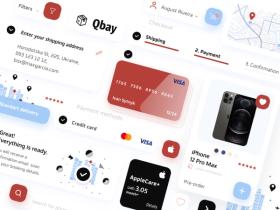Contents
The Complete Guide to Implementing Push Notifications into a React Native App
Published: May 2, 2022
13 min read
In this article, you'll learn:
1
🧰 Prerequisites
2
📱 Setting Up a React Native Application
3
🛠️ Setting Up Node.js Server
4
💡 Final Results
To attract our users’ attention and increase engagement, we at Stormotion create communication touchpoints — push notifications. This article provides an example of how we apply cross-platform remote push notifications to our React Native applications with a simple server written in Node.js.
🧰 Prerequisites
To be able to implement a full-cycle push notification process, you’ll need:
- Your React Native application.
- A physical device. Unfortunately, remote push notifications don’t work on emulators.
- An active Firebase project (you can follow this link to create a new project).
- Docker (recommended for the server).
You can find the complete source code in our GitHub repository
to create a new project).
📱 Setting Up a React Native Application
Setup
As was mentioned above, you need to have an active Firebase project.
First, add Firebase to your React Native application using React Native Firebase documentation and configure it for the Android app. You can skip the iOS setup since we’re using a different tool (Apple Push Notifications service) for Apple devices. To look at the APNs implementation process, you can check the “Setting Up Node.js Server” section).
If your project uses different Firebase modules (like Dynamic Links for Passwordless Authentication), don’t forget to set it up for the iOS application.
Congratulations! Now, your app can receive and handle push notifications! But we have not made anything to send them yet. It’s time to start the server implementation.
🛠️ Setting Up Node.js Server
For this part, we have set up a starter project for Node.js with Express and PostgreSQL. The main goal is to show how to configure the node-pushnotifications library, and this part is mainly universal for different Node.js frameworks.
Note. To run the server, you need to install Docker. If you want to use it in the development mode, run docker-compose -f docker-compose-local.yml up -d && yarn dev. To run it in production, you need to specify environment variables for the PostgreSQL database and the server (respectively, you need to modify the "knexfile.js") and run docker-compose up -d.
This server has two endpoints: articles and tokens. We use them in our app to fetch data from the database. Since we don’t have the form to create new articles in our app, we will use Postman for this purpose. Returning to notifications, we want to send them every time a new article is posted. As mentioned earlier, we will do it using the node-pushnotifications library:
If you want to learn more about the capabilities of React Native, you can read about how we handled several protocols of BLE devices in the React Native fitness app.
💡 Final Results
Woohoo! You’re all set for sending notifications. Let’s create a new article and post it using Postman. Keep the phone beside you so as not to miss the first notification 🤗
Was it helpful?
Read also

How to Make your React Native Application Accessible to ALL, not just to MANY

Which Payment Providers should I use for my SaaS Product?

What makes React the best option for SaaS Apps?
Our clients say
![Stormotion client David Lesser, CEO from [object Object]](/static/93e047dadd367691c604d8ffd1f54b58/b0e74/david.png)
They were a delight to work with. And they delivered the product we wanted. Stormotion fostered an enjoyable work atmosphere and focused on delivering a bug-free solution.
David Lesser, CEO
Numina
